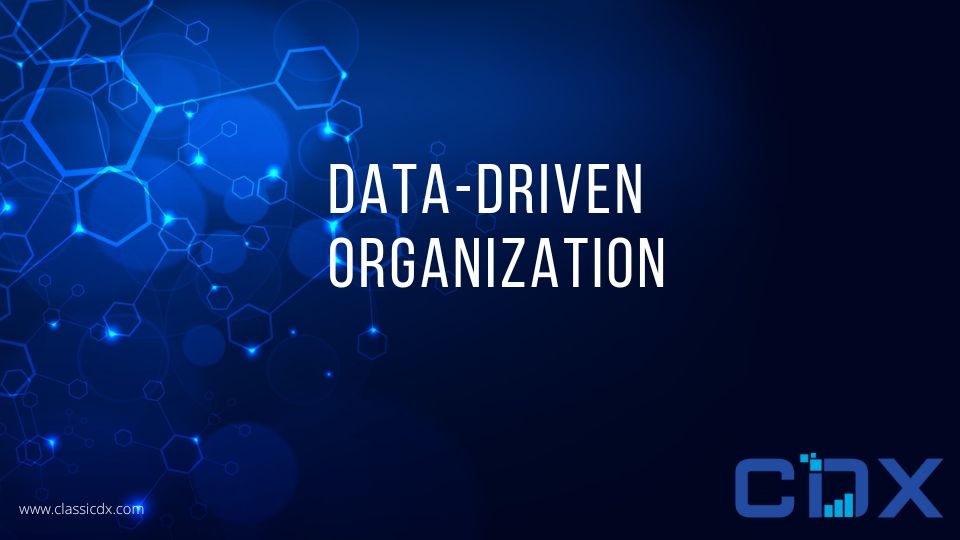How to foster a Data-driven Organization?

As data continues to grow exponentially, business leaders have access to more raw performance data than ever before. A Data-driven organization effectively collects data and consistently utilizes them in their decision-making process across all levels. However, many organizations still struggle to harness the power of data for their business.
“Creating a data culture is one of the keys to building a data-driven organization. The right technology, data literacy, and disrupting the status quo are ways to start” – Sara Brown (MIT Sloan School)
Data-driven culture does not just execute the strategy, it also embraces a culture of change and enhances employee productivity through the power of dataacross departments effectively. As an organization strives towards a data-driven culture, they should consider these questions:What is our data strategy as an organization?
- What are the metrices leadership advocatesfor decision-making?
- How sophisticated is our data governance approach?
- What are the capabilities to be acquired?
- Are there gaps in data skills across different levels?
- Are they following analytics framework?
At Classic DX we have created a path forward towards a data driven culture byaddressing these questions. Other organizations attempting to address their complex business problemscan do the same. These are theeffective guiding principles.
Develop Data Strategy
Nearly all companies collect data regarding their business, but a major part of the data collected by companies goes unused, and they are not doing this deliberately. Laying out a plan and putting a strategy together to efficiently use the data is a complex task and requires a lot of expertise. Often,a customer centric strategy is the key to the business, and to create aligned goals, an organizationmust use data-driven approach to capture and derive meaningful insight intowhat the business does and what the business needs.The agility of the environmentneeded to integrate these objectivesare critical in gaining a better understanding of how demand would change and enable them to make informed decisions as they plan for the future. To future proof the data strategy to be flexible enough to accommodate any change along the way, companies must have:
- Business Case
- Data and Technology Reediness
- Quality Assessment
- Lifecycle Management
- Analytics Road Map
Define Metrices
Metrics are measurements that involve using outputsto evaluatethe conclusionstofocus on counting and tracking the data. In an evolving world of business, organizations must stay competitive tostay ahead of the benchmark. To make an insightful decision, an organization must collect the right information. A set of quantifiable metrices that are derived from a data source which has a direct co-relation with the business goal is the Key Performance Indicator (KPI),and these metricshave to beproduce in defined intervals so the organizations can compare with a baseline.Forward focused metrics can make prediction and forecast logical conclusions about future actions.
- Identify
- Measure
- Analyze
- Report
- Optimize
Establish Data Governance
Data governance involves setting up procedures,quality,regulations, and security to increasehow efficiently the organization can use their data. Standardizing data fields across databases and departments makes data easy to manipulate and navigate.Data governance provides a consistent view of data, while individual business units retain appropriate flexibility on collecting and consuming. With effective integration efforts. data inconsistencies in different systems across an organization can be optimized to create efficient Business Intelligence (BI), enterprise reporting, and analytics applications.
- Governance Management
- Process Management
- Risk Management
- Metadata Management
Enable Capabilities
Capabilities of an organization is moderated by their ability to carry out data engineering, to build efficient, modern data pipeline by defining technology requirement and leveraging data from a different data source.Cloud based managed services such as Platform as a Service (PaaS) offers help to configure end-to-end data stack in one framework tool with no time wasted for setup. This allows an organization toingest any data virtually from any source to any destination and build a pipeline of multiple services with a combination of integration, data quality, and data sharing on a single solution like Amazon Web Service or Microsoft Azure. These cloud vendors provide a scalable, performant foundation compared to your own data center at flexible expensing methods.
- Data Ingestion
- Data Lake
- Data Warehouse
- Data Pipeline
- Real-time Analytics
Deploy DataFramework
Data framework used to utilize different tiers of data analysis such as reporting, insights, and prediction to provide organizations a standardized flow of information in analytics and leveraging innovations in AI and ML. Developing a matured framework of services takes a lot of consideration and planning, but any effort put into this process will translate directly into powerful results further down the road.
AI and ML are critical to helping businesses analytics to gain competitive advantage,because theyare part of the framework to leverage the innovation with augmented analytics. ML learns from data and identifies trends, patterns, and relationships between data points, so it can use past experiences to adapt to changes and improvise on the data.
Data visualization can create dashboards, KPI, and insights from data source inputtedand processed from all thedata sources into one unified data warehouse.
- Mining
- Augment with AI
- Analyze
- Optimize
- Visualize
Build Data Literacy
To build a data culture, everyone on the team needsto be data proficient. It is not only about having the right skills, but also the right level of data literacy aptitude to make data-driven decisions. Organizations can create different “data tribes”,and each may have its own preferred sources of information to help employees develop their analytics skills through trainings, show-and-tell sessions, and other activities.
info@classicdx.com
www.classicdx.com
